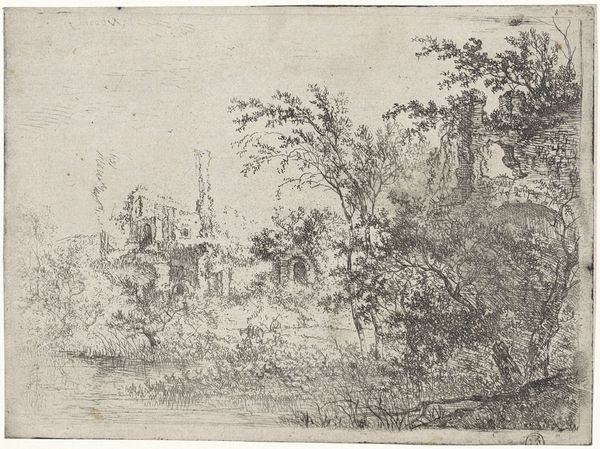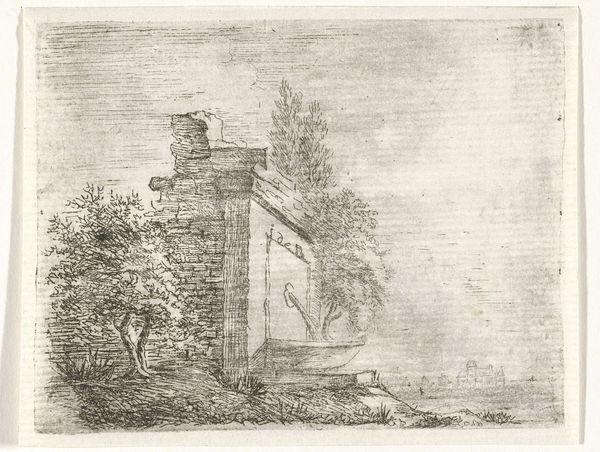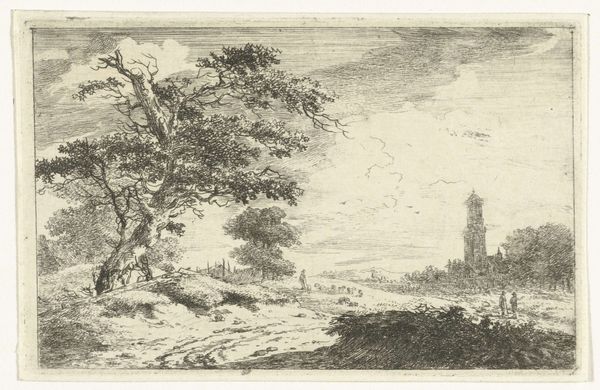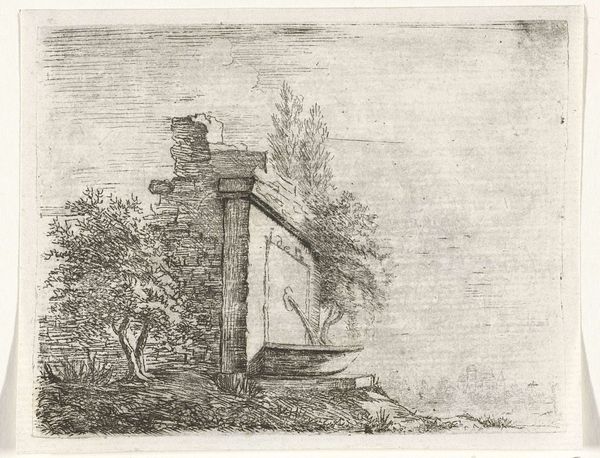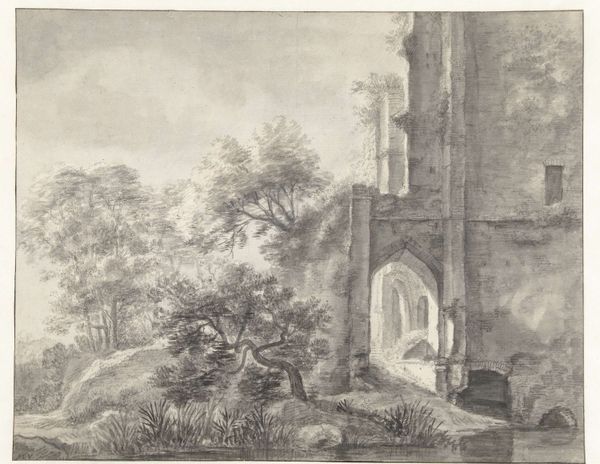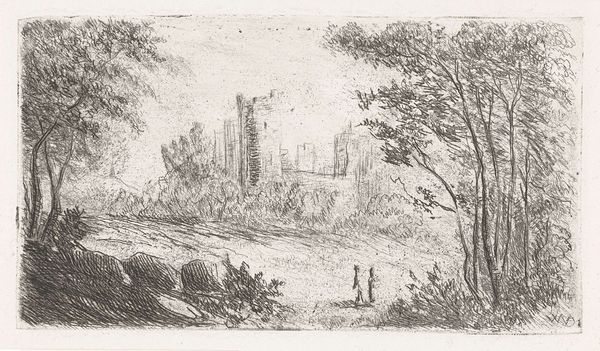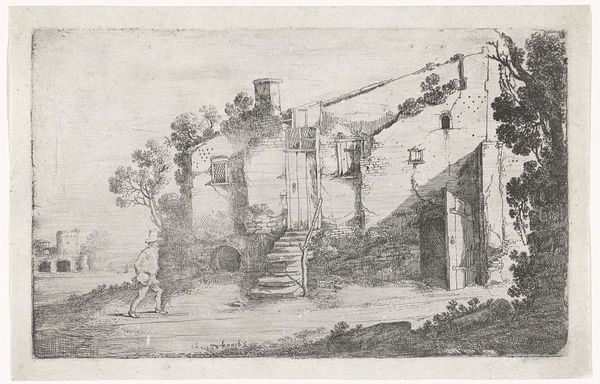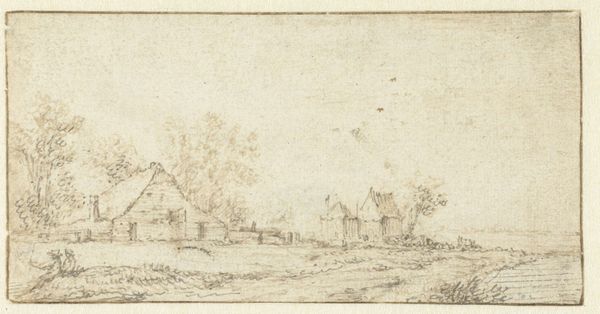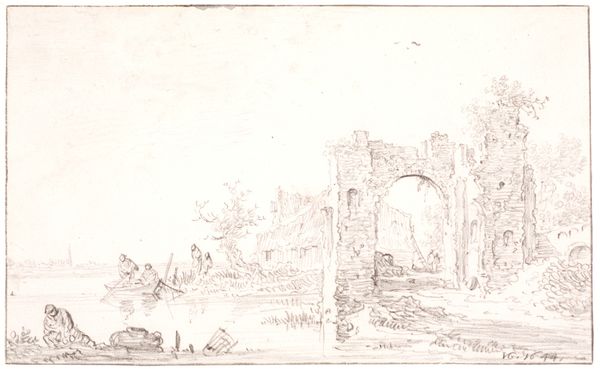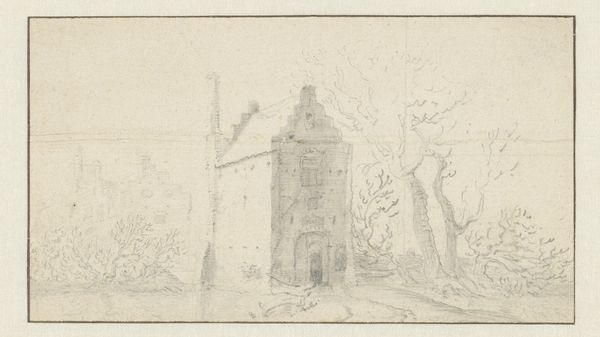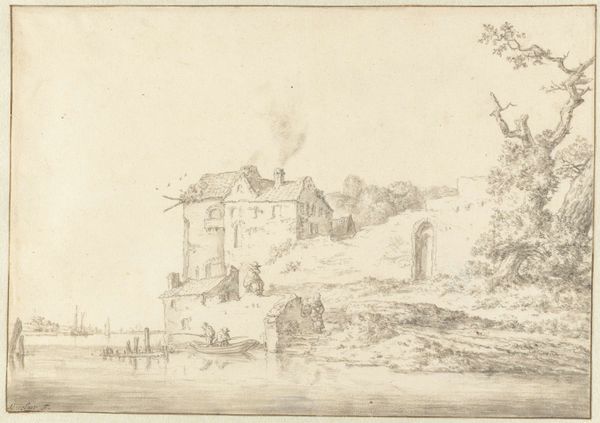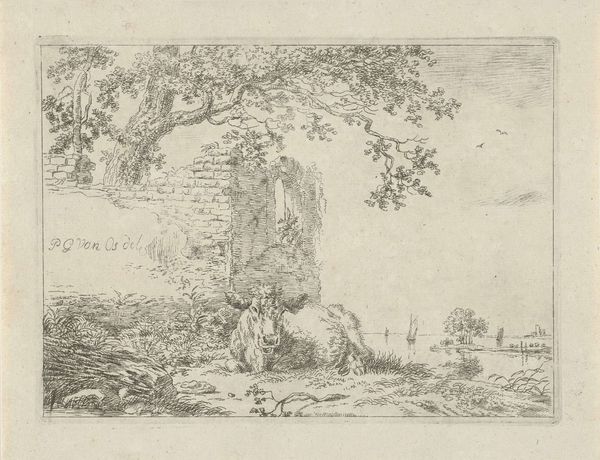
drawing, etching, paper, ink
#
drawing
#
medieval
#
etching
#
landscape
#
river
#
etching
#
house
#
paper
#
form
#
ink
#
cityscape
#
history-painting
#
realism
Dimensions: height 193 mm, width 332 mm
Copyright: Rijks Museum: Open Domain
Hendrik Kobell etched this "Ruin of Huis te Merwede near Dordrecht" sometime before his death in 1779. Here we see the remnants of a once formidable structure, now given over to nature. These kinds of ruinscapes were popular in the late 18th century Netherlands, reflecting larger cultural attitudes. The Dutch Republic, once a global power, was in decline. Artists turned to images of decay as a way to express anxieties about national identity and the passage of time. Note how Kobell contrasts the crumbling architecture with the pastoral scene of peasants and animals. This juxtaposition highlights the transience of human achievement against the enduring power of nature. As art historians, we look beyond the aesthetic qualities of the image. By researching the history of the "Huis te Merwede," the artist's biography, and the cultural trends of the period, we can better understand this etching as a commentary on Dutch society and its place in the world.
Comments
No comments
Be the first to comment and join the conversation on the ultimate creative platform.

